Log in or create new account to save this product to your wishlist.
How to Beautify Your Lawn with Garden Lime
Applying garden lime helps your grass plants absorb more nutrients from the soil and boosts the efficacy of fertilisers. Read on for our expert's guide to when and how to use garden lime.
Latest articles
7 MIN 22 Jul How to keep your lawn in shape this summer 9 MIN 15 Jul Watering Your Garden: 10 Top Tips! 11 MIN 15 Jul Is Your Grass Type Right for your Garden? 11 MIN 10 Sep Create Your Low-Maintenance Garden – Tips and Ideas 11 MIN 08 Sep The Ultimate Guide to Choosing the Perfect Hedges for Your Garden 12 MIN 30 Aug The Top 20 Evergreen Climbers to Transform Your GardenAre you struggling to transform your dying grass into a beautiful lawn? Has your grass become overrun with moss and weeds? You need garden lime!
Ideally, grass needs a pH of around 6.5 and 7. Any higher, and you’re creating a lovely environment for weeds (and terrible conditions for your grass). Luckily, garden lime is the answer – neutralising acidic soil.
But when should you sprinkle it, and how much should you use? This article explores all you’ll ever need to know about garden lime.
How do I know if my soil is acidic?
Grass doesn’t like acidic soil, but that doesn’t mean that everything in your garden hates acid. Ericaceous plants such as azaleas, rhododendrons, and daffodils love acidic soil.
But acidic soil turns your grass yellow. Organic decomposition and leaching cause the acidity to rise, washing away the calcium and magnesium. That’s why it’s so important to rake up fallen leaves from your lawn in the autumn.
The simplest way to assess the acid level of your soil is to use a pH testing kit. They range from little electronic devices to litmus papers – remember those little strips you used in the school science lab!
If you discover that your soil is acidic, you can neutralise it with garden lime.
What is garden lime used for?
Garden lime is a calcium compound – usually created from ground-up limestone. There are four main advantages to using garden lime:
- Neutralising soil acidity (pH value) – Spreading lime helps you achieve the correct acidity level. Lime contains lots of calcium, which raises the pH value. The most suitable soil acidity for grass is 6.5-7.
- Lime prevents the growth of moss – Lime will help your grass grow faster than moss. Remember, the denser your turf, the less space for moss to develop.
- Fertilisers are better absorbed – Over-fertilising can increase the acidity of your soil. However, garden lime assists the absorption of garden fertilisers. For that reason, you should first spread lime BEFORE fertilising.
- Reduces the chance of weeds – Lime helps strengthen your grass plants, creating a denser, thicker covering of grass. Thicker grass gives weeds less of an opportunity to develop.
When should you spread garden lime on your lawn?
Testing your soil will confirm whether your soil is too acidic or too alkaline. You might recall from school science lessons:
- The strongest acid is pH0
- Water is pH7
- The strongest alkaline is pH14
Neither alkaline nor acidic soil is great for grass.
Alkaline soil is sometimes called “sweet soil” and contains high sodium, calcium, and magnesium levels. It’s most commonly found in drier regions with lower levels of rain or in hard water areas. Roots often struggle to absorb nutrients in alkaline soil.
You can lower the pH of high alkaline soil with sphagnum peat, aluminium sulphate, iron sulphate, acidifying nitrogen, and organic mulches.
Acid soil is deficient in calcium and magnesium and is more commonly found in regions that receive lots of rain.
You can apply garden lime at any time of the year, but it’s most recommended in the autumn, winter, or before the start of the spring.
If the weather is dry, you’ll need to water your lawn immediately after applying garden lime or sprinkle it just before a rain shower.
Never sprinkle lime and fertiliser at the same time; it will drastically reduce the effect of both.
Fighting acid soil with garden lime: how much should you use?
Our advice is to lime twice a year with Lawn Lime. Use 25 grams per m2. It makes no sense to sprinkle too much at once. After all, the acid value of the soil does not change overnight. If your soil has the correct pH value for grass, then lime once a year – again, 25 grams per m2. In this way, you prevent the acidification of the soil, and the earth maintains the correct pH.
For best results, we recommend that you use Lawn Lime twice a year. Use 25g per m2. It’s better to add too little than too much – it’s almost impossible to remove once you’ve laid it down.
Don’t expect the acidity to change overnight; it’s a gradual absorption process.
If you’ve tested your soil and the pH is about right, then it’s still advisable to sprinkle garden lime, but minimise it to once a year. This will prevent future acidification.
How to use garden lime
Lime – in itself – won’t damage your grass. But it is essential to sprinkle evenly across your lawn’s surface. Uneven distribution won’t necessarily affect the look of your lawn in the short term, but the pH may vary if you’re not accurate when you sprinkle.
An uneven pH throughout your lawn could eventually affect your lawn’s appearance.
So, distribute your garden lime as evenly as possible. Follow our step-by-step guide, and you won’t go wrong!
Remember: apply garden lime in dry weather only, and make sure the grass is dry before you begin.
- Remove leaves and garden debris. Compost as much as you can. Or you could rake fallen leaves into your flower beds – they act as mulch over the winter and nourish the soil as the organic matter breaks down.
- Mow your lawn (unless it’s winter – your grass plants enter dormancy when the soil temperature drops below 10℃).
- Measure your lawn and work out the size in m2. If it’s 4m x 5m, your lawn is 20m2 (i.e., 4×5=20).
- Calculate how much Lawn Lime you need for the job. (Remember, you need 25g per m2). So, for a 20m2 lawn, you’re going to need 500g. That’s 20m2 x 25g = 500g.
- Divide your measured garden lime into two equal parts (i.e., 2 x 250g).
- Sprinkle the first part lengthways and the second part widthways. Try and make the coverage as even as possible. This can be done by hand, but it is better to use a spreader for a more extensive lawn.
After application, water your lawn to encourage the absorption of the lime. You can walk on the grass straight away.
Does garden lime kill moss?
Moss likes acidic soil. Lime won’t directly kill it, but it will make the earth less hospitable for moss.
Moss is problematic for lawns because it grows over the soil surface and prevents rainwater from penetrating down into the earth. This makes the grass dry out, giving it a yellow appearance.
So, applying lime will help your grass maintain its deep, luscious green colour and prevent moss from zapping the water from the grass’s roots.
Can I apply lime and fertiliser to my lawn at the same time?
No!
If spread lime and fertiliser at the same time, they effectively cancel each other out. The calcium and nitrogen bond together, and your grass will not absorb the nutrients.
We advise you to wait at least four weeks after liming before you fertilise.
Four is the magic number here.
Apply lime in winter or early spring, and fertilise four weeks later. And then wait four weeks after fertilising if you intend to apply lime again later in the year.
Should I use garden lime granules or powder?
This is down to your personal preference.
Powder absorbs into the soil quickly, but it can get blown away by the wind. Most lime products don’t fully absorb with the first watering – if the soil dries out after the initial watering, a strong gust of wind could blow the remaining powder residue away.
Granules create less mess and can be more evenly spread. MOOWY’s Lawn Lime is a granulated powder (so it’s the best of both worlds). This means the powder is packed into a little jacket which quickly dissolves when it makes contact with water.
Should you apply garden lime to new grass?
If your soil test reveals that your earth is too acidic, it’s safe to apply garden lime to a newly turfed lawn. Unlike iron sulphate, lime won’t scorch your grass.
However, it’s better to give new grass a starter fertiliser – don’t instantly jump to the lime aisle in your garden centre. Fertilise with a good starter fertiliser and use lime four weeks later.
Is garden lime toxic?
As with all garden chemicals, always read the label. And while MOOWY’s Lawn Lime is not toxic, we absolutely do not recommend eating it. Our packaging is resealable, so store it (closed) away from pets and children.
Once scattered, it’s safe for children and pets to use the lawn (but – for other brands – read the label!).
Ready to get started, or do you want more information?
We hope you’ve got enough information here to start your own garden liming project. But we’re always happy to help if you have queries.
If you have any questions, we’d love to hear from you.
Get in touch. We will be happy to help you.
Leave a comment
Your answer will be displayed on the site and the interested party will be notified by email.
Leave a comment
Have a question or want to share your experience? Leave us a comment.
Read more
The best tips and tricks for a lush green lawn
 Scarifying Kit
All products after scarifying | Quickly restores the lawn after scarifying | Outsmart weeds quickly with the use of this kit
From: € 39.99
Scarifying Kit
All products after scarifying | Quickly restores the lawn after scarifying | Outsmart weeds quickly with the use of this kit
From: € 39.99
 Spring Lawn Care Kit
MOOWY’s choice for the spring | Quick recovery of your lawn after winter | A strong lawn prevents weeds
From: € 25.99
Spring Lawn Care Kit
MOOWY’s choice for the spring | Quick recovery of your lawn after winter | A strong lawn prevents weeds
From: € 25.99
 Long Lasting Lawn Fertiliser
Effective for 90 days | See results in 14 days! | Suitable for all types of grass and soil
From: € 13.99
Long Lasting Lawn Fertiliser
Effective for 90 days | See results in 14 days! | Suitable for all types of grass and soil
From: € 13.99
Do you want a lawn calendar?
🌱 All important maintenance moments for your lawn during the year. Leave your email and we will send you the lawn calendar for free.
Enter your email
Receive the lawn calendar in the mail
Enjoy a green lawn all year round!




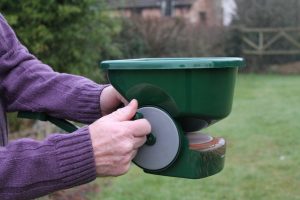
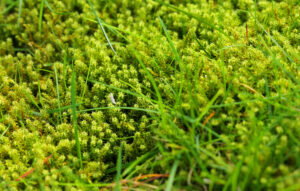
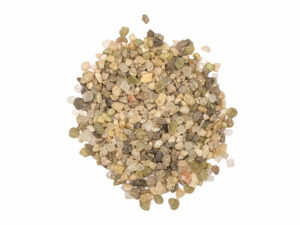

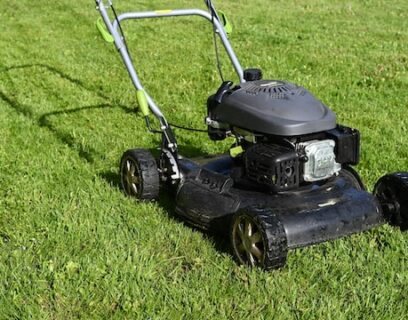

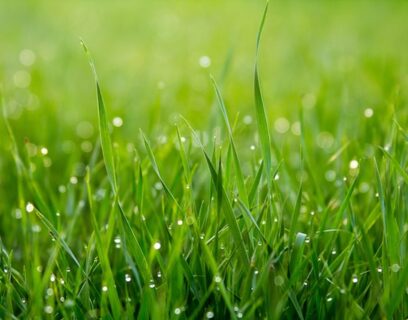






Comments (0)
There are no comments yet. Well then, what are you waiting for to
Be the first to write your comment!inaugurate this pretty page?
Do you have some comments?